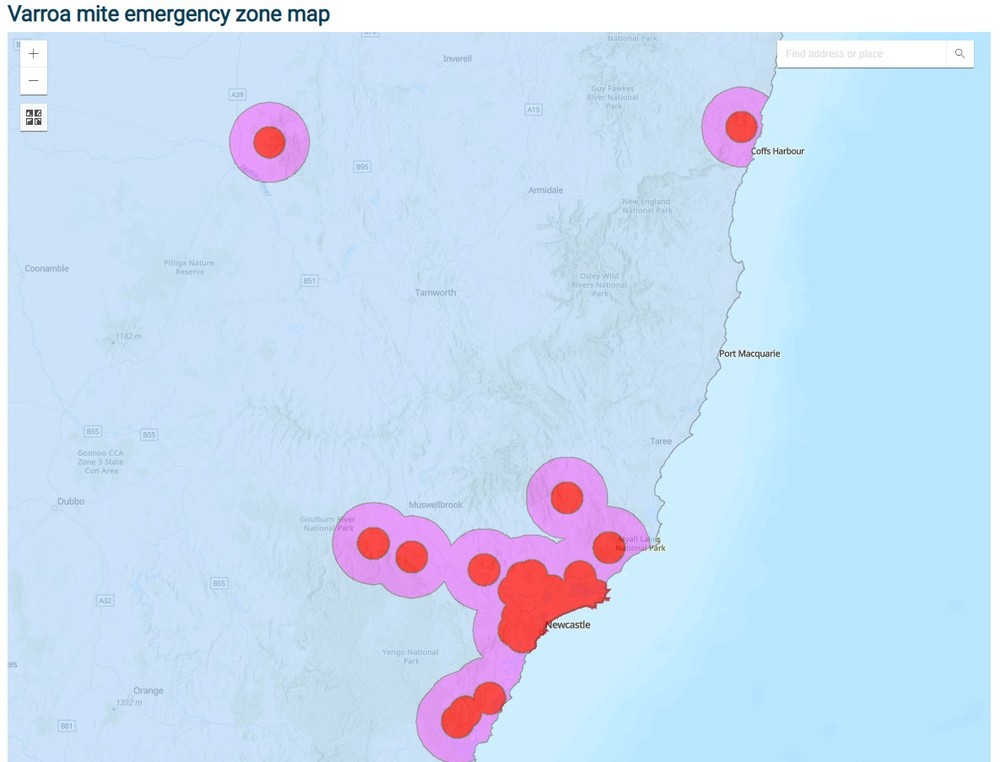Varroa mite emergency zones loosened
Marnie Ryan
23 August 2022, 3:10 AM
 Yellow notification zones, where no varroa mites have been detected, will be lifted for beekeepers across NSW.
Yellow notification zones, where no varroa mites have been detected, will be lifted for beekeepers across NSW.Nine weeks have passed since the detrimental Varroa mite outbreak was first detected at the Port of Newcastle, starting an emergency eradication and movement ban across NSW.
The state- wide emergency order resulted in the NSW Department of Primary Industries (DPI) eradicating over six million bees within the 'red- zone' in an attempt to stop the spread of the mite.
Earlier this week, the 50 km yellow notification zones have been officially lifted for beekeepers in parts of the state. Giving some beekeepers access to move honeybees and hives across the state once again.
Minister for Agriculture, Dugald Saunders said the decision shows that the DPI is confident in their tracking methods used to control the spread of the mite.
"Through stringent tracing and surveillance operations, field teams have determined the limit of natural spread around each of the infected premises (IPs)".
“There are 2,398 hives across 466 premises that have been sampled in the notification zones and have returned negative results, giving us confidence there is no longer a need for them," Mr Saunders said.
Studies indicate that bees travel as far as 12km. With 75% of foraging bees flying only 1km. This indicates that the risk of bees flying from an IP to a notification zone are very low and realistically would not occur.
“Thorough research and testing shows the risk of spread within a yellow zone is no different to that of the statewide blue zone, so these yellow areas will be dissolved and will now fall under the same rules as the general emergency zone,” Mr Saunders said.
The yellow notification zone covered 277 commercial and 3,434 recreational beekeeping premises. Mr Saunders said beekeepers can now apply for a Hive Declaration which offers support for beekeepers that have been affected by the state- wide emergency.
“This is great news for the 3,711 known beekeeping premises in the notification area, allowing them to apply for a Hive Movement Declaration which will ensure business continuity and support the State’s $20.9b primary industries sector", Mr Saunders said.

The removal of the yellow zones means the high-risk areas are more easily identified. Note the hotspot around Narrabri remains. IMAGE: www.dpi.nsw.gov.au/varroa
As well as the loosening of movement restrictions, both commercial and recreational beekeepers can now apply to be reimbursed for hives that had to be destroyed as a result of the state's Response Plan.
Other losses for those affected such as destroyed honey stocks, products foregone may also be covered.
5,742 hives have been euthanised to date and surveillance and testing has been carried out on 26,849 hives across the State.
You must be a registered beekeeper with NSW DPI to be eligible for reimbursement.
JOB LISTINGS




